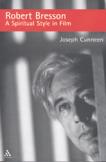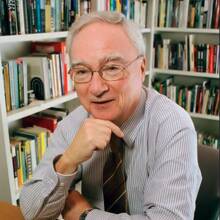Scarred by Sin,Touched by Grace
Best known in the United States for his early films, “Diary of a Country Priest” (1951) and “The Trial of Joan of Arc” (1962), Robert Bresson became known to the critical establishment as a “Catholic” filmmaker. In this brief but comprehensive survey of the complete works, Joseph Cunneen validates this reputation, but not for the reasons that one might suppose.
As founding editor of Cross Currents magazine and longtime commentator on religion and culture, the author knows that the relationship between Catholicism and the arts demands more careful analysis than simply noting the presence of a priest and a saint among the lead characters in two of the 13 French-language films his subject created during the half-century of his artistic career. Yes, he incorporated the work of Bernanos, Mauriac and Giroudoux into his scripts and found inspiration in the fiction of Tolstoy and Dostoevsky. But he plumbed the inner lives of prisoners, thieves, murderers and suicides. One of his principal characters is a donkey, in Au Hasard Balthazar (1966). Bresson died in 1999 at the age of 98, leaving a small, complex and critically challenging body of work.
Cunneen rises bravely to the challenge. As Cunneen’s subtitle indicates, Bresson’s Catholicism must be understood in terms not of content but of style. In his scripts, he pares away all extraneous detail that filmmakers generally use to embellish the truth. Like any good artist, he invites contemplation-without-presupposition of the people and objects he presents on the screen. He forces entry into the lives of fictional characters in such a way that we feel through their senses and understand as they do. Seeing grace in all people, he never allows us to approach them from a position of moral superiority. We see them as God sees them. Citing the French critic Jean Sémoulé, Cunneen notes “he does not arrogate to himself the point of view of God in order to judge them.” He does not try to provide motivation or explanation, since life unfolds as a manifestation of God’s providence. A Catholic contemplates the universe as a mystery, not a riddle.
Much of Bresson’s thought, then, takes an identifiably negative tint. Evil exists in the world for reasons beyond human comprehension. The story of Job repeats itself in the lives of ordinary, contemporary people. Bresson does not, as Cunneen notes, “force his material into some consoling pattern.” Through it all, however, the films respect the unique sacredness of each character, even in their defeat. “Grace fills the empty spaces,” as Simone Weil notes, and true to his artistic vision Bresson takes time to create the empty spaces honestly and at times painfully.
This Catholic austerity has limited Bresson’s circle of admirers. His films place demands on audiences like minimalist art or atonal music. His rejection of theatrical influences on his films is total. Referring to his actors as “models” for the images he wants to put on the screen, he used only nonprofessionals who would bring no artifice to the role nor provoke expectations in the audience. Lighting and color remain subdued, almost invisible. Music never magnifies emotion. Yet natural sounds—wind, traffic, hoofbeats, even breath itself—provide an experience of the world as it hems in the characters. Bresson’s films resolutely reject the heightened “special” effects that have assumed primacy in contemporary film.
Joseph Cunneen has provided a work of serious film criticism that takes the reader beyond the films under discussion. In each three-part chapter he provides an introductory reflection to situate the film in Bresson’s oeuvre. A detailed plot summary follows. Because of the subtlety and complexity of the subject, these can be challenging for author and reader alike. In the third section, he adds a commentary that includes a survey of several other critics and reviewers. At the end, the author has provided an appreciation of an important but little known body of films. Even more, Cunneen has provided a unique perspective for a theological reflection on art and culture in a universe scarred by sin, touched by grace.
This article also appeared in print, under the headline “Scarred by Sin,Touched by Grace,” in the September 8, 2003, issue.








